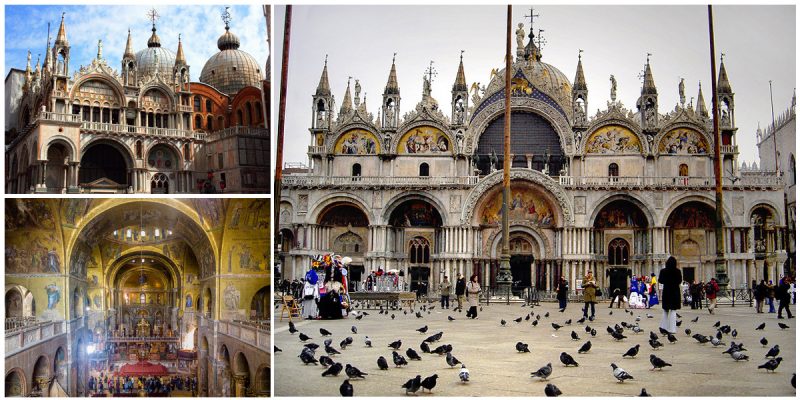St. Mark’s Basilica, one of the most beautiful and most-visited buildings in Venice, is the cathedral church of the city’s Roman Catholic Archdiocese, and it is one of the most gorgeous examples anywhere of Italo-Byzantine architecture. The church is situated at the Piazza San Marco, adjacent to the Doge’s Palace. Originally, it was part of the palace, but since 1807 it has been the cathedral of Venice.
Because of its magnificent design and its status as the city’s symbol for power and wealth, the cathedral has also been known as the “Church of Gold.” The most amazing part of its interior is the gold floor mosaics with their shimmering effect. The cathedral was built next to the Doge’s Palace in 828. In 976, it burned down but was rebuilt again in 978. Nothing definite is known about the previous design of these churches, and it is believed that today’s design was perhaps completed in 1063.

Many additions have been made since St. Mark’s became the seat of the Patriarch of Venice. The Pala d’Oro that was brought from Constantinople was installed inside in 1105, on the high altar. A year later, there was a fire, and the golden mosaics were severely damaged. Today, there are no original collections left because they are continuously restored; there is only some work from the 11th century that survived in the central porch.
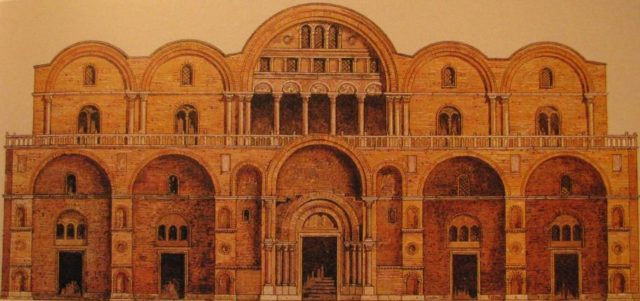
During the 13th century, most of the mosaics were finished, and the new façade and the narthex were completed. The basic construction was not changed much; only the decorations were redesigned over time. The latest additions to the building include St. Isidor’s Chapel at the beginning of the 14th century, the new carvings in the Sacristy in the 15th century, and in the 16th century the completion of the Zen Chapel.
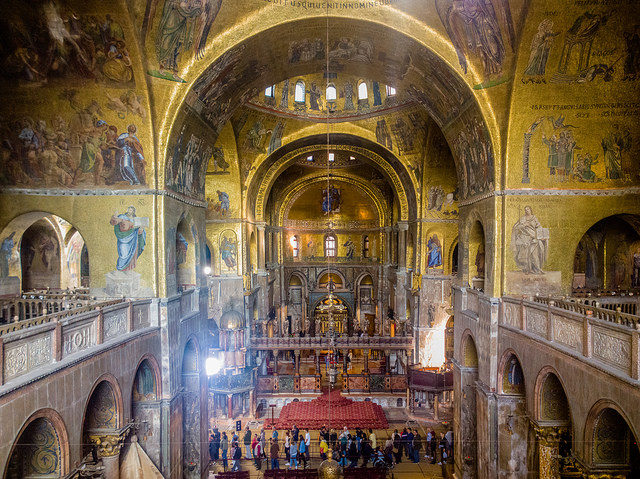
The west façade’s exterior is divided into three registers: the lower, the upper, and the domes. In the lower part of the façade, there are five arched portals, enveloped by marble columns and opening into the narthex through beautiful doors made of bronze. In the upper part of the lower register, there are mosaics with scenes from the life of Christ. The lunettes of the lateral portals are filled with mosaics that show scenes from St. Mark’s life. In the upper register, there are several statues that watch over the city including the statues of the four Warrior Saints: Theodosius, St. Mark, Constantine, and Demetrius.
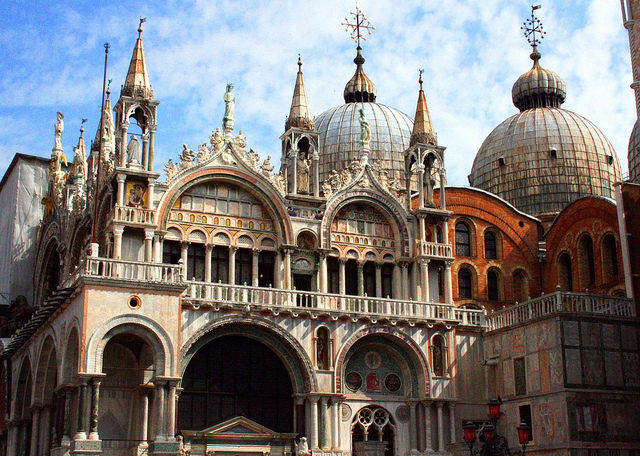
Under St. Mark, there is a winged lion—which was his symbol—and he holds a book with the quote “peace to you Mark, my evangelist.” In the center of the basilica’s balcony, four bronze horses face the square. The horses of St. Mark were installed in about 1254 and the ones that we see today are bronze replicas of the originals, which have been kept in St. Mark’s museum inside the cathedral.
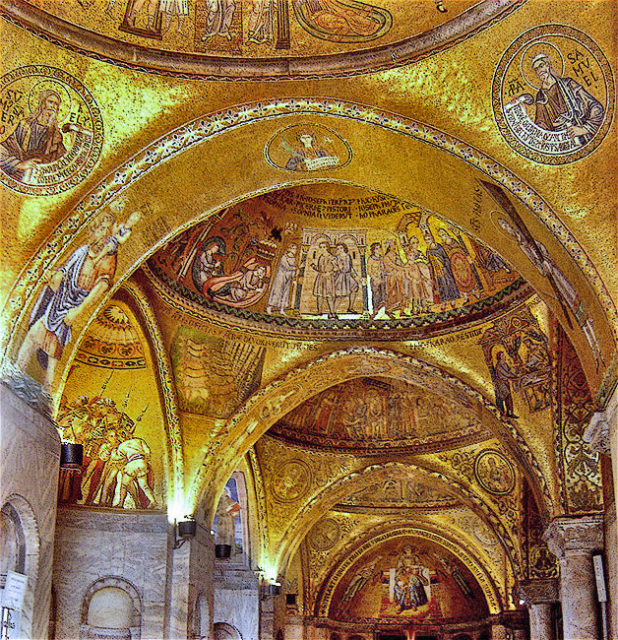
The interior of the basilica is based on a Greek cross design, and the amazing marble floors from the 12th century are decorated with the most beautiful animal designs and geometric patterns. Another interesting thing to note is that the lower and upper registers are divided around the basilica by passageways, which are substitutes for the former galleries. The interior of the upper levels is completely covered with the golden mosaics, which are continually restored by removing and resetting.
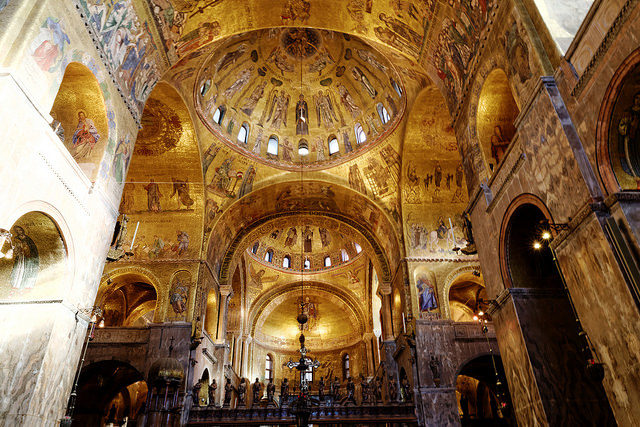
The Salviati firm runs the workshop for the mosaics, and because of the various restorations, only one-third of the mosaic surface is close to the original.
Besides the firm, many great painters did their part in this process, such as Jacopo Tintoretto, Andrea del Castagno, Paolo Uccello, and Paolo Veronese. Another section with the work of great artists like Titian is the Sacristy from the 15th century.
